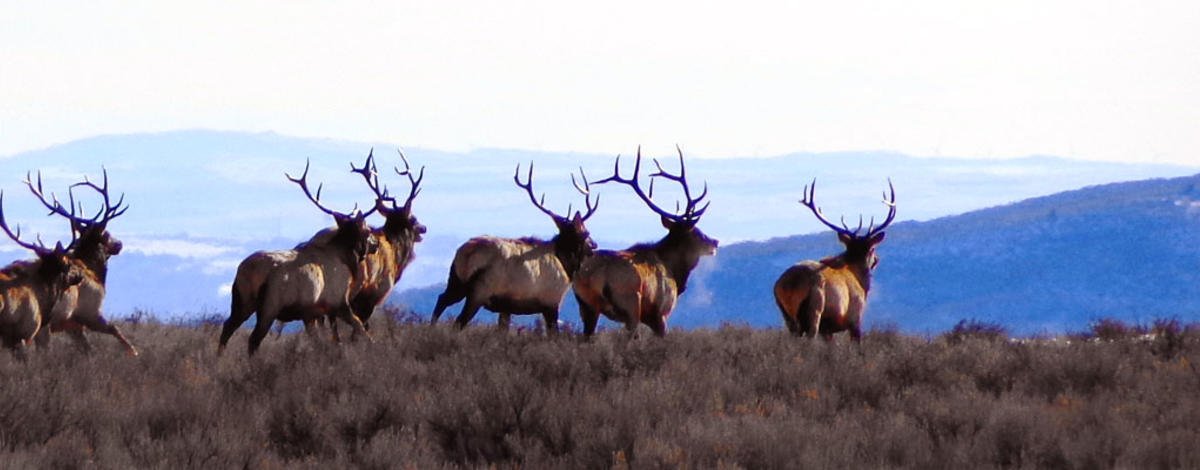
Mule Deer in Idaho
Mule deer were not commonly seen in Idaho before European settlement. Historical journals often mention bison and bighorn sheep but rarely mule deer, which also appear less frequently in Native American rock art compared to bighorns.
Idaho’s first regulated deer hunting dates back to the territorial era in 1863, when a closed season was established from February through June. After statehood, the first official deer season began in 1893, and hunting licenses became mandatory in 1903.
Most mule deer migrate between summer and winter ranges every year. The longest documented journey covers more than 240 miles, stretching from Wyoming’s Red Desert to summer range near Island Park. Research suggests these routes are passed down from mother to fawn.
Although usually associated with dry country and high terrain, mule deer are capable swimmers and will cross wide rivers, lakes, and reservoirs. They are part of a broader family with up to 11 subspecies, including blacktail deer, and today mule deer are found across western states and into Mexico.
Elk in Idaho
Elk antlers grow and shed differently than deer antlers. Bulls typically keep their antlers through the winter until new growth pushes off the old set. A full-grown rack can weigh up to 40 pounds and takes nearly 160 days to grow. Antler size generally increases until about the sixth set, then may vary based on health and nutrition.
Elk harvests in Idaho have been strong, with hunters taking more than 20,000 animals in nine of the past ten years. That level of success has only been matched once before, between the mid-1980s and mid-1990s.
Elk also carry two small canine teeth called “ivories,” thought to be evolutionary remnants of tusks used by ancient relatives. They are also the most vocal of Idaho’s big game species, using bugles, chirps, mews, and barks to communicate. Cow elk can even identify their calves by the unique sound of their squeals.
Idaho’s elk populations were once so low that hunting was restricted in 1909. To rebuild numbers, herds were relocated from Yellowstone beginning in 1915, arriving first by rail and then distributed to new habitats around the state through the 1940s.
White-Tailed Deer in Idaho
White-tailed deer are the oldest known deer species, with fossils resembling modern whitetails found in Florida dating back five million years. Their ancestors originally crossed into North America via the Bering Land Bridge.
Whitetails have nearly panoramic vision, about 310 degrees, and their night vision rivals their daytime eyesight. GPS collar research in Idaho has also shown that some does will travel 20 to 25 miles to give birth, later returning with their fawns.
Fawns are small at birth, weighing six to eight pounds, but they grow quickly, often reaching ten times their birth weight by their first winter. Some subspecies, like the Keys deer of Florida, are even smaller at birth, averaging only two pounds.
Harvest data shows that mule deer have historically made up most of Idaho’s annual take. However, since records began tracking deer by species in 1975, white-tailed deer have occasionally surpassed mule deer, including in 1994 and again as recently as 2023.
Related Coverage
- Idaho News – https://idahonews.co/idaho-news-3/




